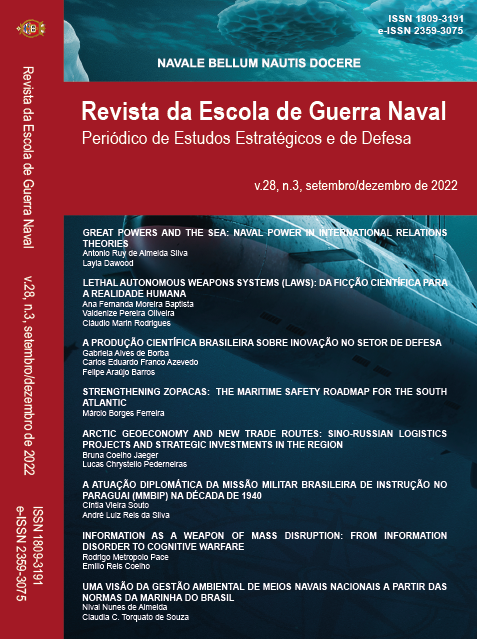Great Powers and the Sea:
Naval Power in International Relations Theories
Palavras-chave:
Rise and fall realism, Defensive Structural Realism, Offensive Structural Realism, Sea Power, Naval Power.Resumo
This article aims to discuss the role of sea and naval power in “Rise and Fall Realism”; “Defensive Structural Realism”; and “Offensive Structural Realism”, which are respectively represented by the works of Gilpin (2002) and Modelsky and Thompson (1988); Posen (2003) and Mearsheimer (2001). We argue that these scholars mistakenly employ sea and naval power as if they were synonyms. In fact, these scholars are mainly concerned with the military component of sea power, that is, naval power. In addition, we claim that the relative importance of naval power in relation to other sources of power varies in a spectrum that goes from: 1) the consideration of naval power as a necessary and almost sufficient condition to global power raking, 2) moving to the acknowledgment of naval power as historically important to the last two hegemonic powers but not necessarily important in future manifestations of hegemonic power, and 3) reaching the consideration of naval power as only having a supportive role for land power, being this power the necessary and almost sufficient condition to a high placing in the global ranking of powers. Finally, we reflect on the argument established by those variants of Realism on the connection between naval power and wealth.








 Esta obra está licenciada com uma Licença Creative Commons Atribuição 4.0 Internacional.
Esta obra está licenciada com uma Licença Creative Commons Atribuição 4.0 Internacional.